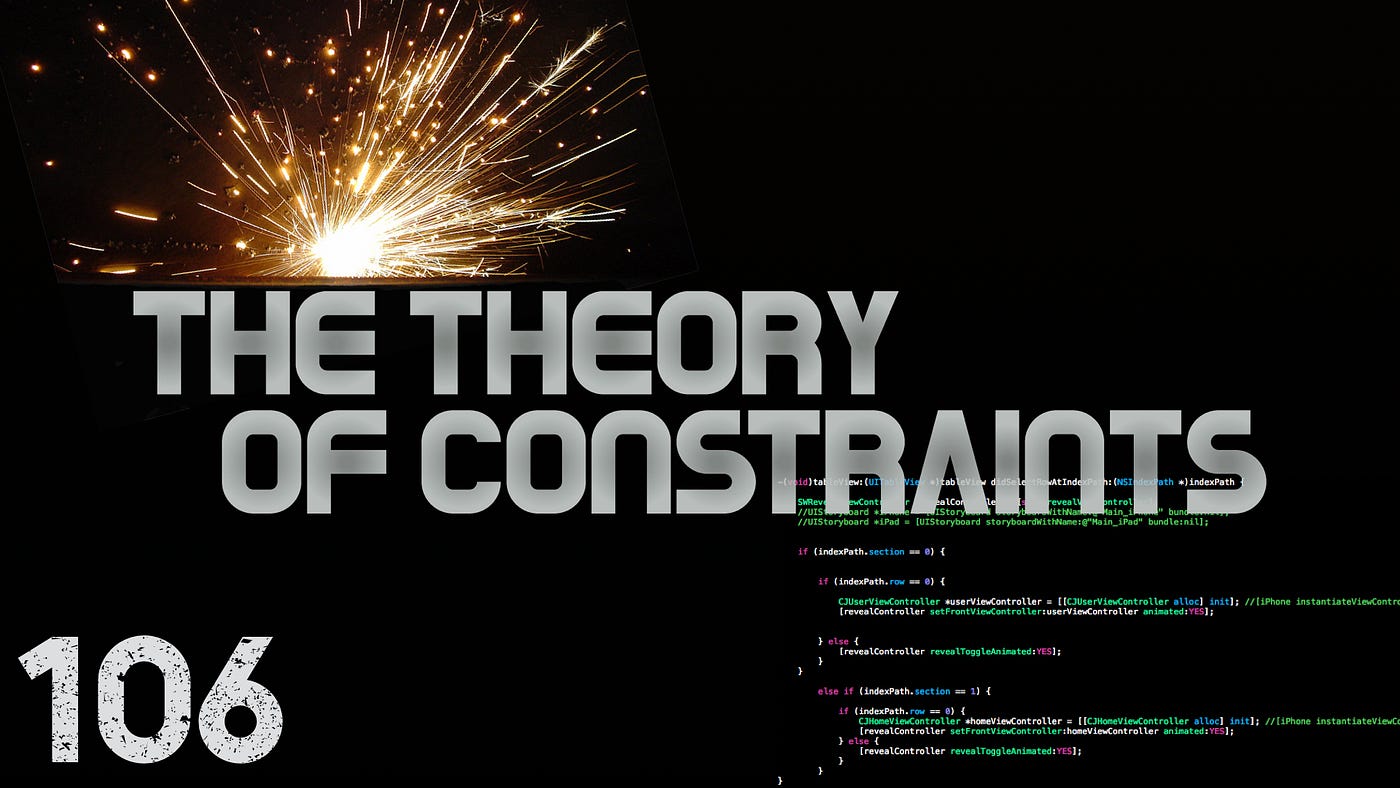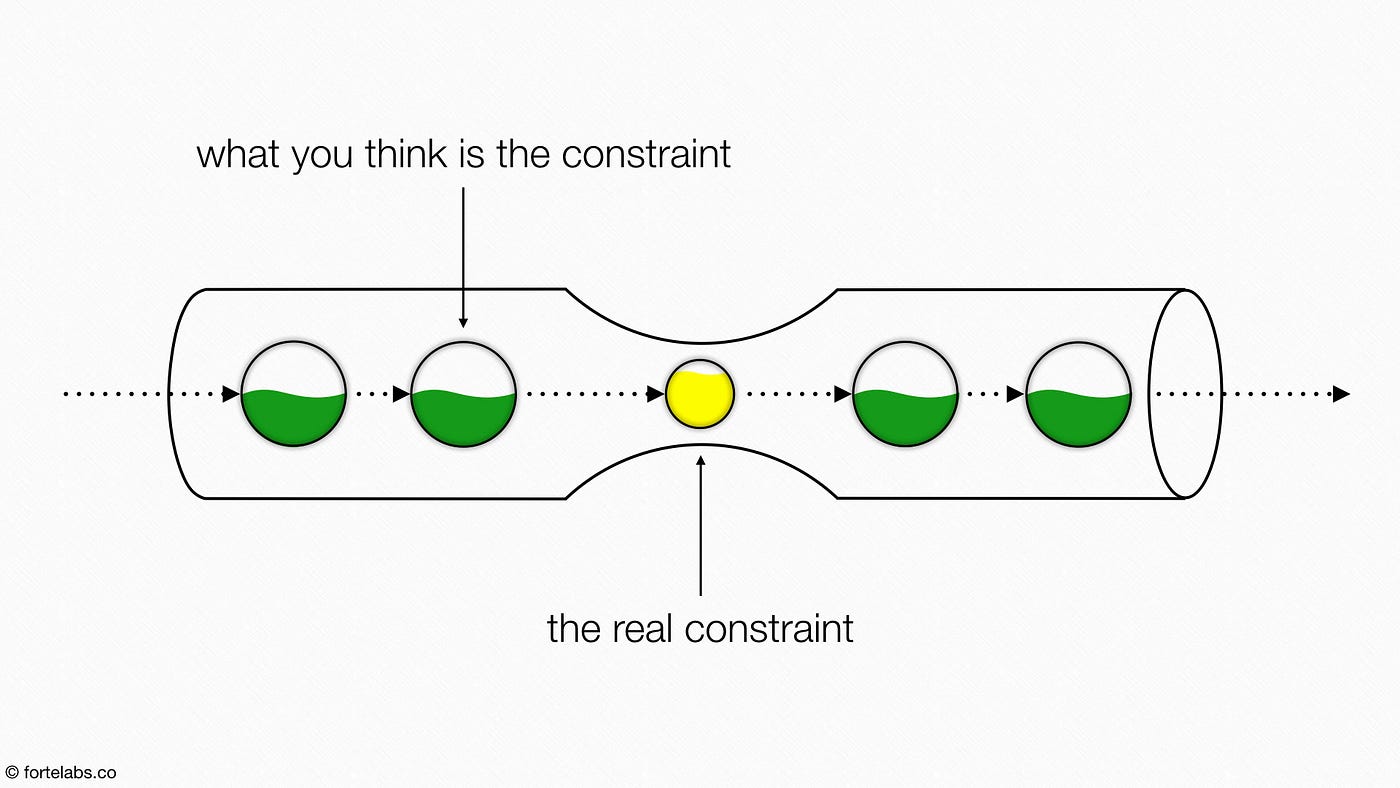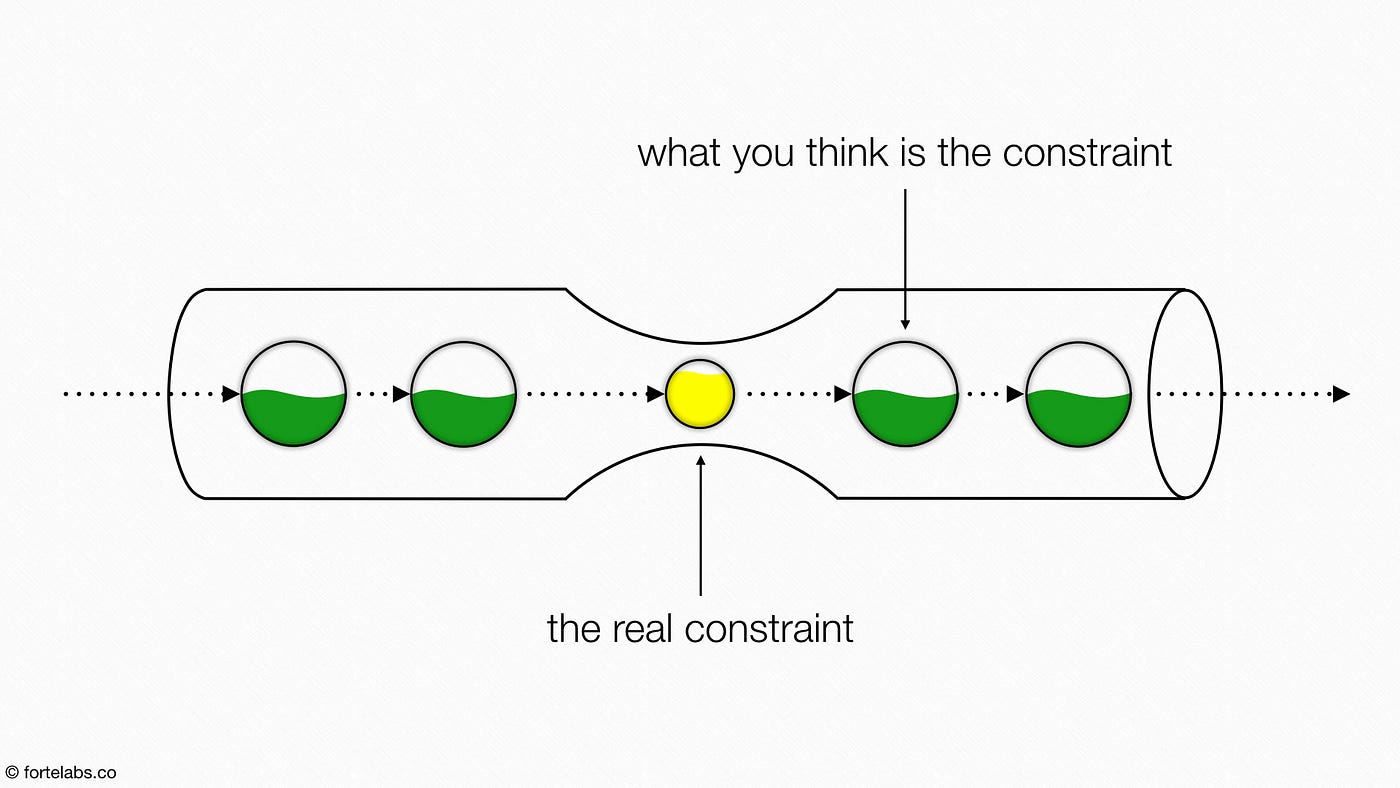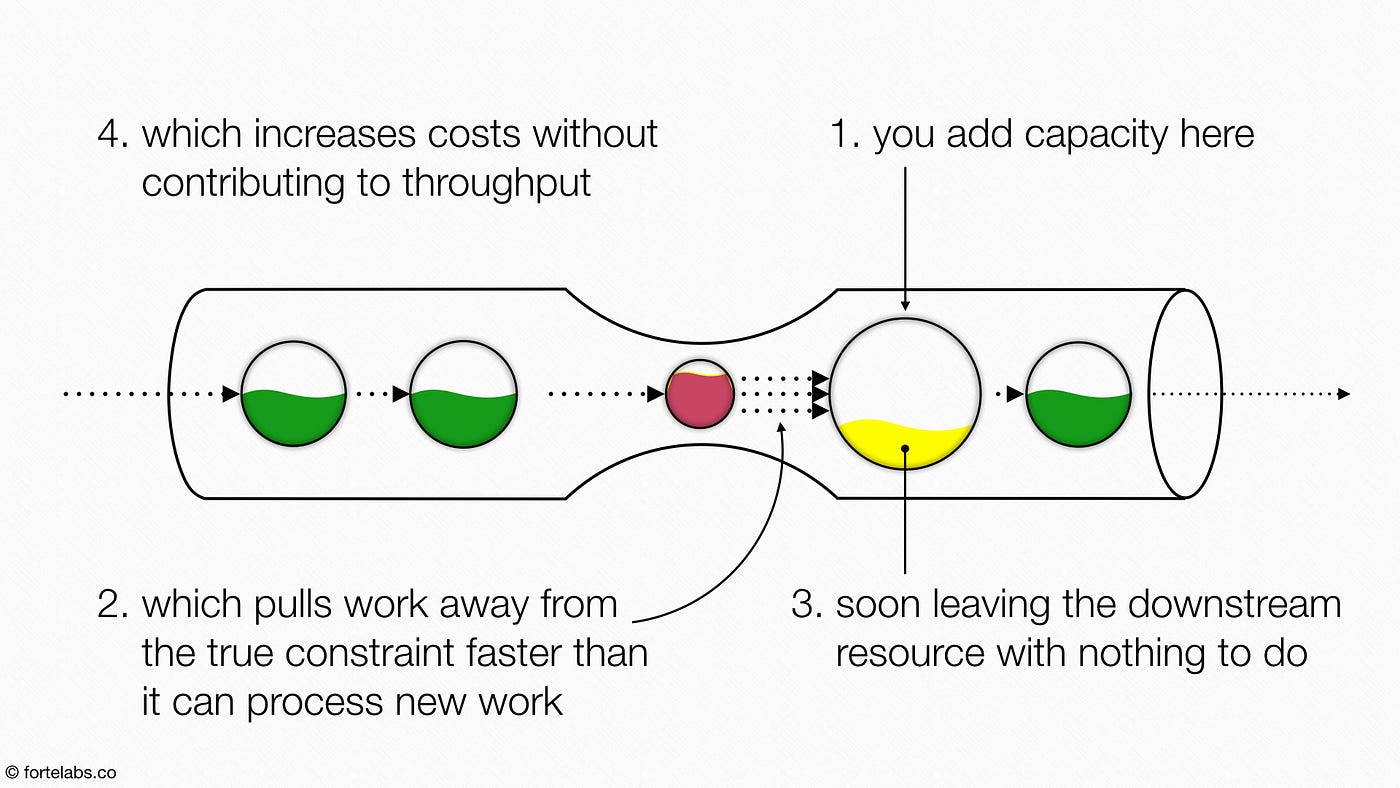In Step 5

Theory of Constraints 106: The V Focusing Steps
A serial of 5-infinitesimal posts on applying principles of menstruation to noesis work
In the previous post, I told the story of a software engineering team at Microsoft who used the Theory of Constraints to produce dramatic improvements in productivity.
But I promise something bothered you: how exactly did they know which changes to make? What process did they use to develop that particular solution? Unless we know this, the all-time we tin can do is follow rigid prescriptions that are unlikely to work in dissimilar contexts.
Now we are finally reaching the very heart of TOC, the continuous improvement method to increase throughput in any system of value creation, known as the Five Focusing Steps:
Step one: Place the constraint
This tells united states where to focus our improvement efforts, since we know that only an improvement at the constraint makes a deviation.
Stride 2: Optimize the constraint
Before adding capacity, we need to employ the capacity we already take. "Optimize" in this sense means "doing everything possible to utilize the constraint to its fullest capacity."
Pace iii: Subordinate the not-constraints
The job of all non-constraints is to subordinate their decisions to the constraint's needs. They should optimize for constraint (and thus arrangement) performance, non their own private operation, the results of which nosotros witnessed in postal service #102.
Step 4: Elevate the constraint
Only once nosotros've completed the previous steps does it make sense to add more constraint capacity, and thereby increase system operation. Because adding chapters is tremendously expensive in terms of fourth dimension and coin, we practise information technology every bit a last resort, not a first resort.
Step five: Return to step 1
The inevitable result of the starting time 4 steps, and the reason this is a "continuous" improvement method, is that the constraint moves somewhere else. This stride insists that you lot start dorsum at the start, and don't permit inertia get the constraint.
Let's take a closer look at Step #one, and why it represents a significant shift in how we behave improvement within organizations.
Identifying the constraint
Considering only improvements at the constraint make a departure to the company every bit a whole, identifying that constraint is the obvious first step.
The reassuring truth is that you don't have to identify it perfectly from the very beginning. This is a self-correcting process, non a waterfall where small errors in the beginning get huge mistakes by the cease. The advantage of working with a dynamic, interconnected system is that it responds very quickly to changes. The behavior of the organisation tells y'all whether you chose correctly.
Let's say you mis-identify the constraint, and add capacity there, only the real constraint is actually downstream:

Adding upstream capacity will only send more work to the real bottleneck, reducing its throughput and thus the organization's throughput. The irony of the situation is that system performance is deteriorating non despite your efforts to add capacity, but straight because of them:

A like thing happens when you mis-identify the constraint as being downwardstream of the true constraint:

Adding more than downstream capacity pulls completed work abroad from the constraint more quickly than it can process new piece of work. Which means this newly expanded resource volition soon be starved for anything to practice, increasing costs while not contributing anything to throughput:

The beliefs of the system in this manner tells you whether you're improving the right thing. And it does it very chop-chop, in the course of changes to throughput that show up inside days or weeks, instead of months or years.
What we're talking about hither is actually a key change to how nosotros go about improving whatsoever kind of circuitous organization, such as a company.
Instead of collecting vast amounts of information on every aspect of the concern, we make our best gauge equally to where the constraint lies, and let reality be our guide. Instead of spending vast amounts of fourth dimension making a detailed program roofing every contingency, we acknowledge that nosotros don't have answers, only hypotheses.
Instead of forcing all-encompassing rollouts changing every function of the system at once, we focus our attention intensely on i spot, even if we're not sure it'south the right one. Instead of treating the constantly changing dynamics of the concern as an enemy to contain, basing our decisions on point-in-fourth dimension snapshots, nosotros encourage the arrangement to cycle even faster, and so that our feedback loops will be tightened and accelerated.
The Germans phone call this Fingerspitzengefühl, or "finger tips feeling," an intuitive sense of the unfolding dynamics of a state of affairs. As in sports or gainsay, you develop this instinct through loftier-frequency participation at the very center of activeness, not back in the part making plans.
To extend the metaphor, await at a map of the value stream of your organization. If yous cannot put your finger on one spot that you believe might be the constraint, or aren't willing to take a chance having this hypothesis proven wrong, you will never be able to focus your efforts. Without focus, you lot'll exist left starting dozens of random projects in random directions, hoping to hit on something through luck or by following prescriptions. Even if yous do have a success, you won't sympathize why.
This is why Goldratt said, if he had to summarize all of the Theory of Constraints in a single give-and-take, information technology would be focus.
Side by side post: #107 Identifying the Constraint >>>
<<< Previous post: #105 Drum-Buffer-Rope at Microsoft
Sign upwards here for a free 30-mean solar day trial of the new Praxis blog , or subscribe to the newsletter to receive notifications of gratis articles. You lot can likewise follow us on Twitter , Facebook , LinkedIn , or YouTube .
salvatoreannever87.blogspot.com
Source: https://medium.com/praxis-blog/theory-of-constraints-106-the-five-focusing-steps-741f1b770bf1
0 Response to "In Step 5"
Post a Comment